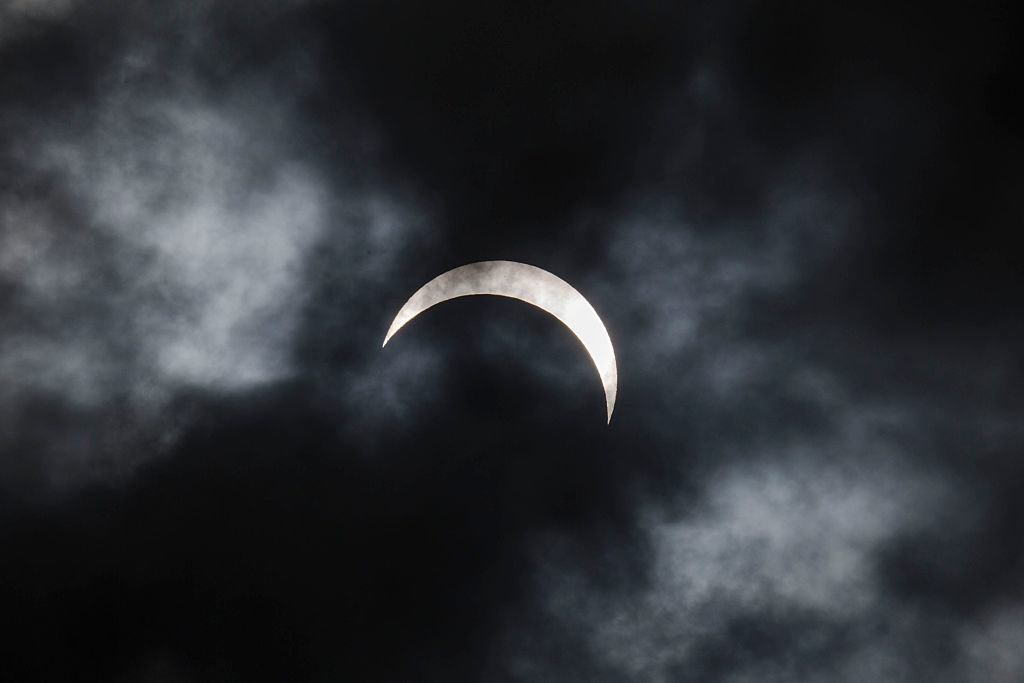Local stargazers and skywatching enthusiasts are encouraged to join the Texas A&M University Astronomy Group on Monday (Aug. 21) for a rare celestial event: a solar eclipse.
For the first time since 1918, people across the continental United States will be able to see at least a partial eclipse, a phenomenon that occurs when the moon crosses between the Earth and the sun and covers part of the latter. Moreover, people in a 70-mile-wide stretch across the country’s midsection will witness a total solar eclipse in which the moon will completely block the sun’s light for nearly two and a half minutes.
Texas A&M’s George P. and Cynthia Woods Mitchell Institute for Fundamental Physics and Astronomy-based star party team plans to set up telescopes on the Texas A&M campus for an exclusive viewing opportunity, slated for 11:30 a.m. to 2:30 p.m. outside the Memorial Student Center in the Rudder Plaza/Fountain area. The team will be onsite to oversee the festivities, led by junior applied mathematical sciences major and Charles R. ’62 and Judith G. Munnerlyn Astronomical Instrumentation Laboratory member Doyeon Kim ’19.
The “Great American Eclipse’s” shadow will cross 14 states, traveling from the west coast of Oregon all the way to the east coast of South Carolina — the first time a total solar eclipse has passed from one coast to the other in 99 years. It will begin in the middle of the Pacific Ocean around 10:46 a.m. Central Standard Time (CST), then hit the coast of Oregon around 11:05 a.m. CST. The shadow then will travel across the path of totality, or the area with a total eclipse, at an incredible 1,500 miles per hour, exiting the coast of South Carolina at 3:06 p.m. CST.
In Aggieland, the eclipse will peak just after 1:13 p.m., according to Vox’s zipcode-based interactive map, at which point 68.3 percent of the sun will be blocked by the moon.
Survey Supports Theory 26 Percent Of The Universe Is In The Form Of Dark Matter
“There are various types of eclipses, and because each one relates to three different orbits – the moon’s, the Earth’s and the sun’s – it all depends on where all three line up and the distance between each of them,” said Texas A&M astronomer Jennifer Marshall. “They happen twice a year, every year, but they can only be seen in a narrow swath on the Earth, so they seem very rare.
“This time, the U.S. is the best place to view it, because the path is almost entirely over us. From our perspective in College Station, however, the eclipse will only be about 70 percent, so we wouldn’t notice a difference between this one and any other one, because it won’t be full.”
The most recent total solar eclipse visible from the U.S. occurred in 1979 and only clipped the northwest corner of the U.S. before swinging up into western Canada. Next week’s event ends a 38-year drought and coincidentally ushers in a new 38-year epoch during which Americans – half of whom weren’t alive in 1979 – will get to see five (2017, 2024, 2044, 2045 and 2052).
Marshall stresses using proper eye protection for viewing — ideally, welder’s goggles or commercial eclipse-viewing glasses. (See additional tips from StarDate.org, including basic instructions for building your own pinhole camera.) Also, because Monday’s forecast calls for partly cloudy skies at the time of the eclipse, she recommends checking the Aggie Star Parties website for day-of updates.
To learn more about the 2017 solar eclipse and how best to experience it, see helpful background and tips, courtesy of Space.com. And for the statistically inclined, check out https://www.greatamericaneclipse.com/statistics/.
To see a list of future Aggie Star Parties and related outreach events, visit http://instrumentation.tamu.edu/starparty.html.
For more information on Texas A&M Astronomy, go to http://astronomy.tamu.edu.
###
Media contact: Shana K. Hutchins, (979) 862-1237 or shutchins@science.tamu.edu, Dr. Jennifer Marshall, (979) 862-2782 or marshall@physics.tamu.edu, or Doyeon Kim, (979) 862-2099 or kdy7991@tamu.edu




